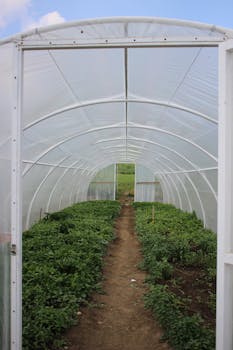The agricultural sector is undergoing a significant transformation due to the integration of digital tools. This evolution not only enhances productivity but also addresses some long-standing challenges in farming practices. As farmers embrace technology, they are not just improving yields; they are driving sustainability in a critical industry.
From precision agriculture to data analytics, digital tools provide farmers with insights that were previously unavailable. These advancements lead to smarter decision-making, more efficient resource management, and ultimately, a more robust agricultural economy. Consequently, understanding the impact of these digital tools is essential for anyone involved in farming.
This article explores the diverse effects of digital tools on agriculture, highlighting key technologies, benefits, challenges, and future prospects. Through detailed sections, we will unravel how technology shapes the future of farming in the United States.
The Evolution of Agricultural Technology
The journey of agricultural technology has been remarkable, beginning from traditional farming methods to advanced digital tools. Initially, farming relied heavily on manual labor and rudimentary equipment. As society advanced, so did the need for efficiency in agriculture.
In the 20th century, the introduction of machinery revolutionized farming. Tractors, harvesters, and irrigation systems significantly increased productivity. However, the digital age has taken this revolution to another level, introducing tools that enhance decision-making.
Modern technology integrates software and hardware, creating systems that analyze vast amounts of data. This integration not only simplifies farming tasks but also allows farmers to maximize their outputs effectively. The evolution towards smart farming is clear.
Technological advancements include precision agriculture, remote sensing, and drones. These tools enable farmers to monitor crop health, optimize resource usage, and increase overall efficiency. It’s a shift that continues to reshape the agricultural landscape.
As more farmers adopt these technologies, the landscape of agriculture will continue to evolve. The ongoing digital transformation signifies a commitment to sustainable practices and improved productivity across the industry.
Precision Agriculture: Enhancing Efficiency
Precision agriculture is a technique that uses digital tools to monitor and manage field variability. The primary goal is to optimize returns on inputs while minimizing environmental impact. This method allows farmers to make data-driven decisions.
Technologies such as GPS, IoT devices, and sensors provide real-time data on soil health, crop growth, and weather conditions. Consequently, farmers can apply the right amount of fertilizers, water, and pesticides based on precise needs.
By utilizing these tools, farmers can reduce input costs and enhance yields. They generate less waste, which promotes sustainability. This approach not only benefits the farmer economically but also positively impacts the environment.
Furthermore, precision agriculture supports crop planning and management by analyzing historical data. This allows for better forecasting of yields and market trends. It equips farmers with the knowledge needed to thrive in a competitive market.
The shift towards precision agriculture is more than just technological adoption; it’s a cultural change within farming. Farmers are becoming data-driven managers of their operations, significantly improving productivity and sustainability.
Data Analytics in Farming
Data analytics is transforming agriculture by providing farmers with insights derived from various data sources, including weather patterns, soil conditions, and market prices. This analytical approach is a game-changer for the industry.
With the help of big data, farmers can identify trends and patterns that would otherwise remain unnoticed. This level of analysis enables them to make informed decisions about planting, harvesting, and marketing their crops.
Moreover, data-driven insights facilitate collaboration among farmers, agronomists, and researchers. Collective knowledge sharing fosters innovation and continuous improvement in agricultural practices. Enhanced collaboration leads to more sustainable outcomes.
Farmers can utilize predictive analytics to foresee potential challenges, thereby strategizing solutions proactively. By anticipating pest outbreaks or market fluctuations, they can safeguard their profits and resources effectively.
The integration of data analytics into farming practices signifies a broader trend toward technological dependence in agriculture. As an industry, embracing data-driven approaches is crucial for addressing future challenges in farming.
Drones in Agriculture
Drones have emerged as valuable tools in agriculture, providing aerial imagery and data collection capabilities that were previously unattainable. These unmanned aerial vehicles facilitate more effective monitoring of crops and fields.
Utilizing drones for aerial surveys allows farmers to assess crop health, predict yields, and identify potential issues, such as pests or diseases, before they escalate. This proactive approach can save time and resources.
Drones also improve the efficiency of spraying chemicals and fertilizers. Farmers can apply treatments more uniformly and precisely, reducing waste and enhancing effectiveness. This use minimizes environmental impact while promoting optimal crop health.
Moreover, drone technology contributes to soil analysis and irrigation management. Gathering detailed aerial data aids in understanding terrain variations, enabling tailored solutions for planting and watering. This fosters more sustainable farming practices.
As drone technology continues to advance, its applications in agriculture will likely expand, making it a staple tool for modern farmers. The future of farming will increasingly rely on this innovative technology.
IoT and Smart Farming
The Internet of Things (IoT) facilitates smart farming by connecting devices and systems for real-time monitoring and automation. This interconnectedness enhances efficiency and productivity on the farm.
IoT devices, such as sensors and smart irrigation systems, provide data on soil moisture levels, weather conditions, and crop health. Farmers can automate processes based on this data, leading to optimized resource usage.
By adopting IoT solutions, farmers can respond to changing conditions in real time. This capability not only ensures optimal growing conditions but also conserves water and energy, which is vital for sustainable agriculture.
Additionally, IoT technologies enable remote monitoring, which is particularly beneficial for large farms. Farmers can manage their operations from anywhere, allowing for better time management and increased focus on strategic planning.
The integration of IoT in agriculture signifies a shift towards fully automated and data-driven farming. This transformation is essential for meeting the growing demands of food production sustainably and efficiently.
The Role of Artificial Intelligence
Artificial intelligence (AI) is becoming increasingly prevalent in agriculture, helping farmers analyze data more effectively and make better decisions. AI algorithms can process large datasets quickly, offering insights that are difficult to obtain manually.
Machine learning, a subset of AI, enables systems to learn from data and improve over time. This learning capacity proves invaluable for predicting outcomes and optimizing farming practices. This technology leads to better crop management.
AI applications extend to pest and disease detection, where image recognition technology identifies potential threats immediately. Early detection allows for timely interventions, minimizing losses and enhancing productivity.
Furthermore, AI-based tools can assist with precision agriculture techniques, analyzing data from various sources to recommend the best farming practices. This technology tailors solutions to individual farms, maximizing efficiency and sustainability.
The future of agriculture will likely be driven by AI technologies, shaping the way farmers operate their businesses. As these innovations continue to develop, they provide the potential for agricultural breakthroughs.
Challenges and Barriers to Digital Adoption
Despite the numerous benefits of digital tools in agriculture, there are significant challenges that farmers face when adopting these technologies. One major barrier is the cost of equipment and software, which can be prohibitive for many small farmers.
Additionally, there is a steep learning curve associated with many digital technologies. Farmers must be willing to invest time and resources into training and education to fully leverage these tools effectively.
Another challenge is the issue of data security and privacy. As farmers collect more data, concerns about data ownership and protection from cyber threats increase, potentially hindering adoption rates.
Moreover, access to reliable internet connectivity in rural areas poses a significant obstacle. Many farmers operate in regions where high-speed internet is unavailable, limiting their ability to utilize digital tools effectively.
Addressing these barriers is essential for fostering the digital transformation of agriculture. Stakeholders, including government entities and technology providers, must collaborate to create solutions that promote technology adoption across the sector.
Conclusion
Digital tools have profoundly impacted agriculture, driving efficiency, productivity, and sustainability. Technologies like precision agriculture, data analytics, drones, IoT, and AI are transforming traditional farming practices.
While challenges exist, the benefits of adopting these technologies are clear. Farmers who embrace digital tools are well-positioned to thrive in a competitive market while contributing to a sustainable future.
As the agriculture landscape continues to evolve, the future holds exciting opportunities for innovation. Farmers that adapt to the digital age will be able to optimize their operations and enhance food production.
Collaboration among stakeholders is crucial for overcoming existing barriers and ensuring equitable access to these technologies. The agricultural sector can look forward to a promising future powered by digital innovation.
| Technology | Benefits | Challenges |
|---|---|---|
| Precision Agriculture | Increased yields, optimized resource use | Requires initial investment, farmer training |
| Data Analytics | Improved decision making, trend analysis | Data security concerns, cost of tools |
| Drones | Aerial imaging, efficient spraying | Regulatory hurdles, cost of equipment |
| IoT | Real-time monitoring, automation | Integration complexity, connectivity issues |
| Artificial Intelligence | Enhanced insights, predictive capabilities | Need for data quality, cost of development |
- Increased efficiency through automated processes.
- Enhanced sustainability with reduced resource waste.
- Data-driven decision-making for better outcomes.
- Proactive management of pests and diseases.
- Development of better agronomic practices through research.


